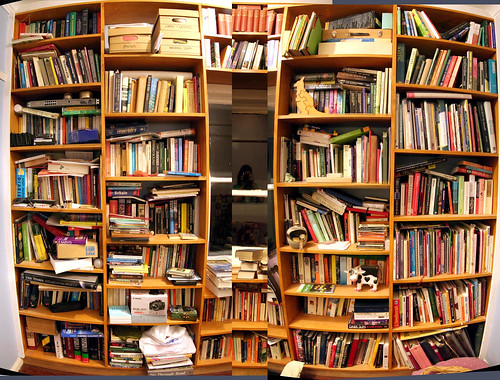I really like Google Reader because it has allowed me to put a feed from Reader on my iGoogle page. So when I go to my iGoogle page, I just get the new feeds without having to go through them all and I don't even have to leave iGoogle to read the posts - they pop up when I move my mouse over the feed. I love this! Talk about having information come to you!
In the same vein, I found this from a recent twit from Joyce Valenza. She is using Pageflakes to create resource feeds for Global Studies, Science and Spanish. Students at her school can go to this site set up for current web-based information that is updated regularly - in some cases on a daily basis. You'll also see that she has linked to her school's databases. So add a Pageflakes link to a pathfinder wiki and students have access to vetted resources by the teacher or teacher-librarian.
Another twit from Bud the Teacher, had me checking out this mind-boggling presentation by Indian researcher Sugata Mitra posted on TED. The experiment is known as Hole in the Wall. :
It's only a 20 minute video, but does it pack a punch! Check out the comments to this video. If you don't wish to watch the video, you can check out this summary here by Gary Stager Here's a quote from the summary that really spoke to me:
Mitra describes his learning theory as minimally invasive education--a hypothesis that even in totally unfamiliar situations, children in groups will learn on their own with little or no input from others, provided the learning environment induces an adequate level of curiosity (my emphasis). Like in minimally invasive surgery there should be no more expert intervention than absolutely necessary.
This work proves that when provided with access to a computer in a social context, all children will become computer literate with or without a traditional teacher. Mitra's careful experiments confirm the theories of Piaget and Vygotsky. Most of all, "The Hole in the Wall," offers a glimmer of hope for concerned global citizens who do not know where to begin in increasing educational opportunity in the developing world. The "Hole in the Wall" project is a testament to the competency and capacity of children to construct their own knowledge in a community of practice. Internet access can connect children to each other and the 21st century.







